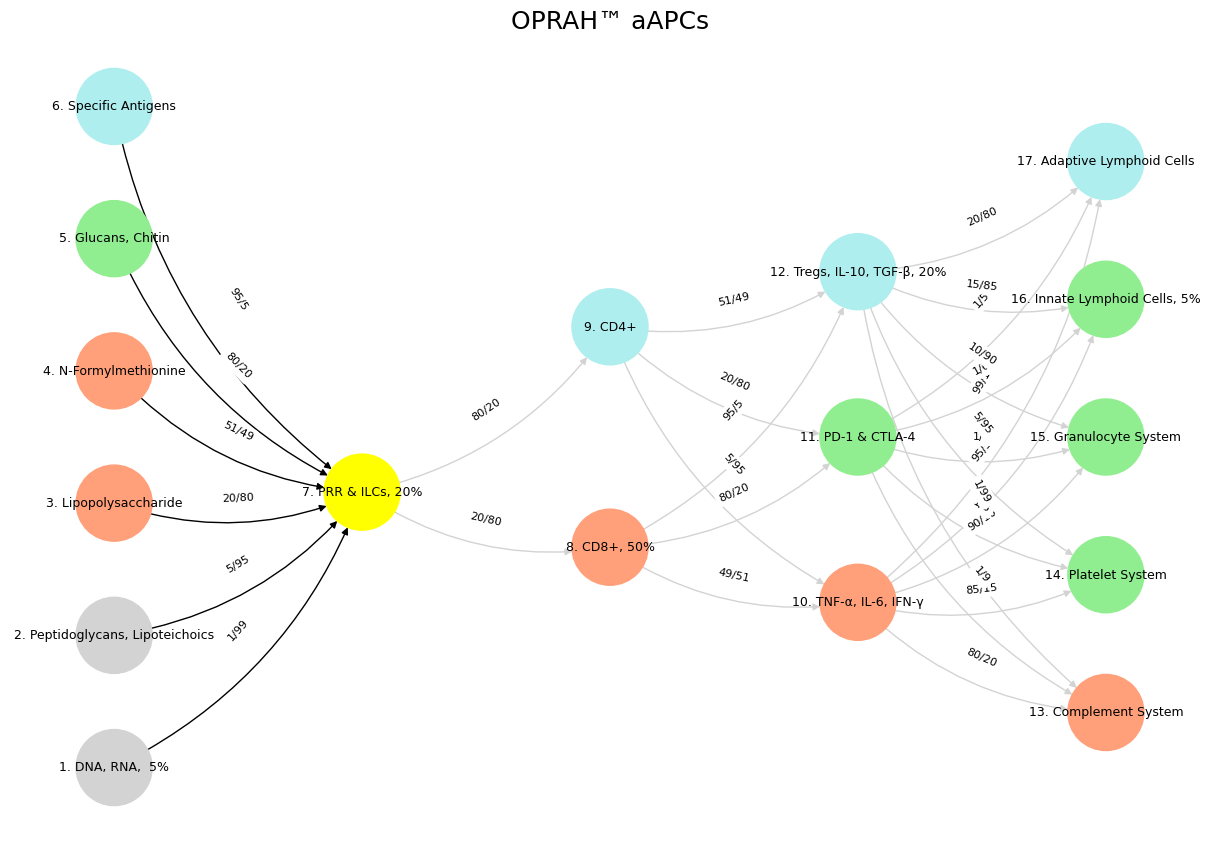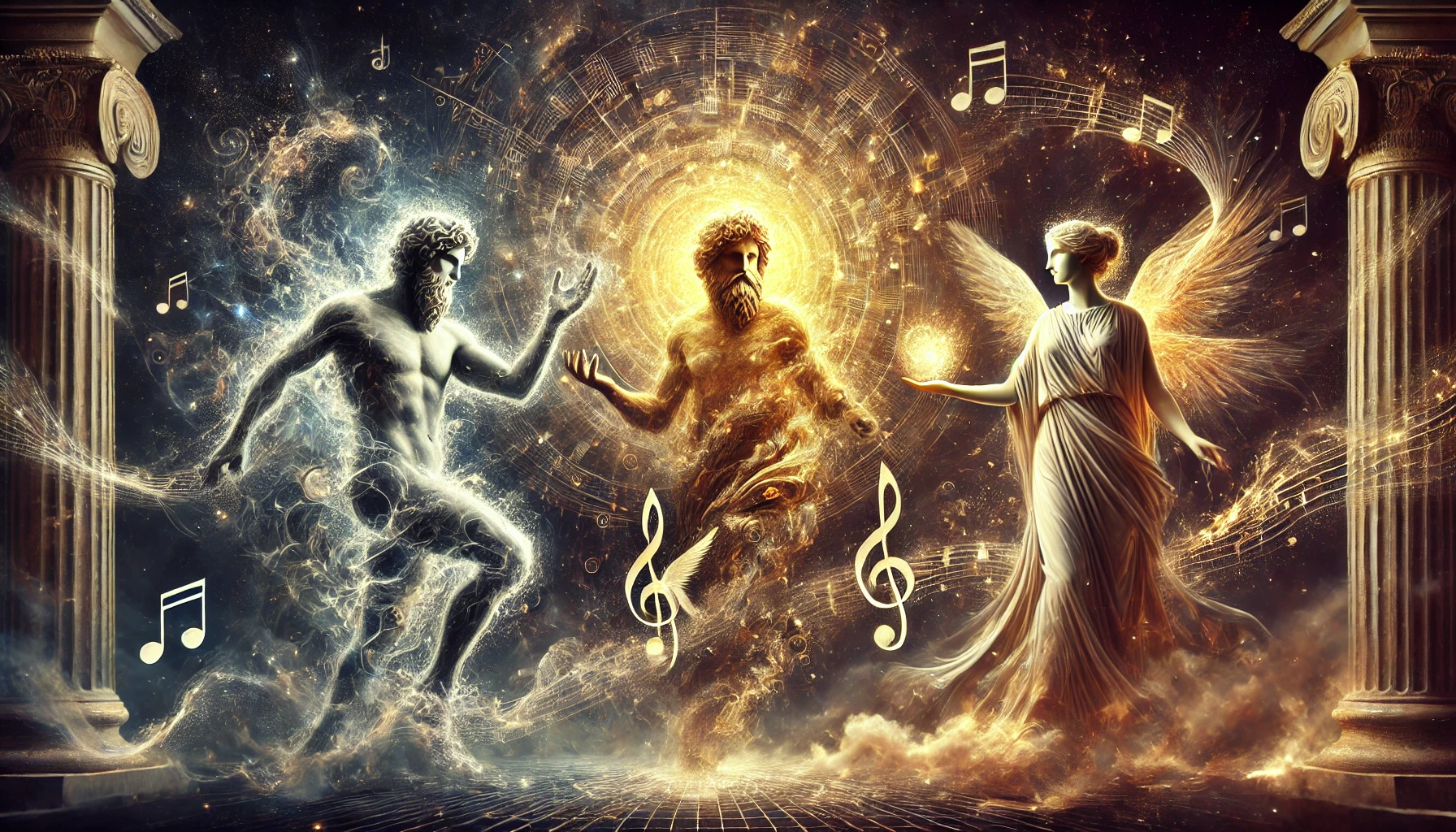Freedom in Fetters#
The essay connects cosmology, geology, biology, ecology, symbiotology, and teleology as progressively complex organizational systems. It explores the colonial relationship between Uganda and Britain through religious and political frameworks, and examines the warrior/anthropological/religious triad as representing different approaches to social organization.
The governance structure (legislature, executive, judiciary) is analyzed as a system that parallels natural processes, with education creating another layer of social stratification. Throughout, I’ve maintained the metaphorical connections to navigation, water, and weather that appeared in your outline.
The symbols and concepts presented paint a complex and unsettling portrait of a world grappling with the legacies of colonialism, the tensions between tradition and modernity, and the stark realities of social inequality. The juxtaposition of natural elements – Earth, water, rain, sun – with the artificiality of the robot suggests a world where technology and nature are inextricably intertwined, raising questions about the impact of human innovation on the environment. The disciplines listed – cosmology, geology, biology, ecology, symbiotology, and teleology – point to a deep intellectual curiosity, a desire to understand the universe, the planet, and the very nature of existence. This pursuit of knowledge, however, is set against a backdrop of societal conflict and imbalance.
The explicit mention of Uganda and Great Britain immediately evokes the historical baggage of colonialism. The contrast between these two nations, coupled with the distinction between “Religio (Moral)” and “Political (Ideological),” hints at a clash between cultural values and political power. The symbols of the warrior, the anthropologist, and the priest – the gun, the feather, and the Bible – further illustrate this tension. The gun represents force and fragmentation, highlighting the destructive potential of conflict. The feather, symbolizing anthropology, suggests a quest for understanding and a transcendence of cultural boundaries. The Bible, representing the priest, embodies the potential for unity and cohesion through shared belief. Yet, this potential for unity is undermined by the stark social hierarchy presented.
The description of the social structure – with an 80% uneducated population, a “good” legislature, an “Übermensch” executive, an “evil” judiciary, and a 5% aristocratic elite – reveals a deeply fractured society. The labeling of the executive as “Übermensch” and the judiciary as “evil” is particularly striking, suggesting a system where power is concentrated in the hands of a potentially corrupt and tyrannical leader, while the institutions meant to provide justice are seen as fundamentally flawed. This social stratification, combined with the symbols of microbes, DNA, islands, weather, and law, indicates that even the smallest elements of life and the largest natural forces are caught within this system of imbalance. The overall effect is a sense of unease, a feeling that the world depicted is teetering on the edge of chaos, burdened by historical injustices and internal contradictions.
CG-BEST. This is our bequest according to cosmology, geology, biology, ecology, symbiotology, teleology. But lets talk Geopolitical.
✨ The story begins with stars, storms, and saltwater. Cosmology doesn’t merely explain the heavens—it insists that before anything was, there was rhythm. The beat of time, of light stretching across impossible distances, is not just scientific—it’s poetic. Geology grounds that poetry, pressing the cosmic into the crust of Earth, folding it, burning it, breaking it down into stories told in strata. Biology—our shared breath with whales, fungi, and viruses—rises from this rocky foundation, not as dominance but as choreography. Then comes ecology, the dance of life weaving itself into tapestry. Enter symbiotology: the reminder that no being thrives alone. And finally, teleology—the question not just of how but why—circles back like a tide. 🌏🌊🌧️☀️🤖 Each layer is a rhythm, a filter, a force, playing out on an infinite ocean of meaning.
🚢 The ship is not neutral. It is a lens, and the captain’s compass 🧭 determines the voyage. In the clash between 🇺🇬 and 🇬🇧, two currents crash into one another—one swirling with nonlinear aesthetic codes, oral traditions, and metaphors; the other, marching in linear moral syntax, wielding rulebooks and rectangles. The former spirals in song, the latter stacks in silence. The colonizer paints time as a straight road; the colonized knows time folds like a mat beneath a village elder’s feet.
🗡️ The sword came first. Guns fragmented muscle memory; warrior codes were disrupted but not erased. 🛶 Then came the canoe of negotiation, anthropological and adaptive, carving new meanings into old symbols. 🏄🏾♂️ Finally, the surfer rides the wave—priest, prophet, or poet—balancing between the fragments and the future. The Bible arrived like a tsunami 📖, flattening yet absorbing, and in the process, coalescing new hybrids of belief. Resistance wasn’t always loud—it was often liturgical.
🧬 Our DNA is both scripture and cipher. But ⚓️ who holds the anchor now? On the island 🏝️, society mimics the sea: 80% uneducated but enthralled by sports 🏀—the arena where myth survives. The legislature is filled with boardroom minds—good, but rarely transformative. The executive is mythologized: a President who must channel the Übermensch or be drowned by the tide. The judiciary pretends to be peer-reviewed but often filters justice through colonial apertures—evil in its pretense of neutrality ⚖️.
☔️ And then, there is the educated: a 5% bishop class 📿, cloaked in aristocratic distance, guarding knowledge like it were rainwater in a drought. They do not teach—they anoint. Their detachment can sanctify or suffocate. Yet in that small, cloistered circle lies the potential for new myths, new teleologies, new islands of meaning.
To navigate this sea, we need the ship, the lens, and above all, the storm. Not to fear it—but to dance within it.
Show code cell source
import numpy as np
import matplotlib.pyplot as plt
import networkx as nx
# Define the neural network layers
def define_layers():
return {
'Suis': ['DNA, RNA, 5%', 'Peptidoglycans, Lipoteichoics', 'Lipopolysaccharide', 'N-Formylmethionine', "Glucans, Chitin", 'Specific Antigens'],
'Voir': ['PRR & ILCs, 20%'],
'Choisis': ['CD8+, 50%', 'CD4+'],
'Deviens': ['TNF-α, IL-6, IFN-γ', 'PD-1 & CTLA-4', 'Tregs, IL-10, TGF-β, 20%'],
"M'èléve": ['Complement System', 'Platelet System', 'Granulocyte System', 'Innate Lymphoid Cells, 5%', 'Adaptive Lymphoid Cells']
}
# Assign colors to nodes
def assign_colors():
color_map = {
'yellow': ['PRR & ILCs, 20%'],
'paleturquoise': ['Specific Antigens', 'CD4+', 'Tregs, IL-10, TGF-β, 20%', 'Adaptive Lymphoid Cells'],
'lightgreen': ["Glucans, Chitin", 'PD-1 & CTLA-4', 'Platelet System', 'Innate Lymphoid Cells, 5%', 'Granulocyte System'],
'lightsalmon': ['Lipopolysaccharide', 'N-Formylmethionine', 'CD8+, 50%', 'TNF-α, IL-6, IFN-γ', 'Complement System'],
}
return {node: color for color, nodes in color_map.items() for node in nodes}
# Define edge weights
def define_edges():
return {
('DNA, RNA, 5%', 'PRR & ILCs, 20%'): '1/99',
('Peptidoglycans, Lipoteichoics', 'PRR & ILCs, 20%'): '5/95',
('Lipopolysaccharide', 'PRR & ILCs, 20%'): '20/80',
('N-Formylmethionine', 'PRR & ILCs, 20%'): '51/49',
("Glucans, Chitin", 'PRR & ILCs, 20%'): '80/20',
('Specific Antigens', 'PRR & ILCs, 20%'): '95/5',
('PRR & ILCs, 20%', 'CD8+, 50%'): '20/80',
('PRR & ILCs, 20%', 'CD4+'): '80/20',
('CD8+, 50%', 'TNF-α, IL-6, IFN-γ'): '49/51',
('CD8+, 50%', 'PD-1 & CTLA-4'): '80/20',
('CD8+, 50%', 'Tregs, IL-10, TGF-β, 20%'): '95/5',
('CD4+', 'TNF-α, IL-6, IFN-γ'): '5/95',
('CD4+', 'PD-1 & CTLA-4'): '20/80',
('CD4+', 'Tregs, IL-10, TGF-β, 20%'): '51/49',
('TNF-α, IL-6, IFN-γ', 'Complement System'): '80/20',
('TNF-α, IL-6, IFN-γ', 'Platelet System'): '85/15',
('TNF-α, IL-6, IFN-γ', 'Granulocyte System'): '90/10',
('TNF-α, IL-6, IFN-γ', 'Innate Lymphoid Cells, 5%'): '95/5',
('TNF-α, IL-6, IFN-γ', 'Adaptive Lymphoid Cells'): '99/1',
('PD-1 & CTLA-4', 'Complement System'): '1/9',
('PD-1 & CTLA-4', 'Platelet System'): '1/8',
('PD-1 & CTLA-4', 'Granulocyte System'): '1/7',
('PD-1 & CTLA-4', 'Innate Lymphoid Cells, 5%'): '1/6',
('PD-1 & CTLA-4', 'Adaptive Lymphoid Cells'): '1/5',
('Tregs, IL-10, TGF-β, 20%', 'Complement System'): '1/99',
('Tregs, IL-10, TGF-β, 20%', 'Platelet System'): '5/95',
('Tregs, IL-10, TGF-β, 20%', 'Granulocyte System'): '10/90',
('Tregs, IL-10, TGF-β, 20%', 'Innate Lymphoid Cells, 5%'): '15/85',
('Tregs, IL-10, TGF-β, 20%', 'Adaptive Lymphoid Cells'): '20/80'
}
# Define edges to be highlighted in black
def define_black_edges():
return {
('DNA, RNA, 5%', 'PRR & ILCs, 20%'): '1/99',
('Peptidoglycans, Lipoteichoics', 'PRR & ILCs, 20%'): '5/95',
('Lipopolysaccharide', 'PRR & ILCs, 20%'): '20/80',
('N-Formylmethionine', 'PRR & ILCs, 20%'): '51/49',
("Glucans, Chitin", 'PRR & ILCs, 20%'): '80/20',
('Specific Antigens', 'PRR & ILCs, 20%'): '95/5',
}
# Calculate node positions
def calculate_positions(layer, x_offset):
y_positions = np.linspace(-len(layer) / 2, len(layer) / 2, len(layer))
return [(x_offset, y) for y in y_positions]
# Create and visualize the neural network graph
def visualize_nn():
layers = define_layers()
colors = assign_colors()
edges = define_edges()
black_edges = define_black_edges()
G = nx.DiGraph()
pos = {}
node_colors = []
# Create mapping from original node names to numbered labels
mapping = {}
counter = 1
for layer in layers.values():
for node in layer:
mapping[node] = f"{counter}. {node}"
counter += 1
# Add nodes with new numbered labels and assign positions
for i, (layer_name, nodes) in enumerate(layers.items()):
positions = calculate_positions(nodes, x_offset=i * 2)
for node, position in zip(nodes, positions):
new_node = mapping[node]
G.add_node(new_node, layer=layer_name)
pos[new_node] = position
node_colors.append(colors.get(node, 'lightgray'))
# Add edges with updated node labels
edge_colors = []
for (source, target), weight in edges.items():
if source in mapping and target in mapping:
new_source = mapping[source]
new_target = mapping[target]
G.add_edge(new_source, new_target, weight=weight)
edge_colors.append('black' if (source, target) in black_edges else 'lightgrey')
# Draw the graph
plt.figure(figsize=(12, 8))
edges_labels = {(u, v): d["weight"] for u, v, d in G.edges(data=True)}
nx.draw(
G, pos, with_labels=True, node_color=node_colors, edge_color=edge_colors,
node_size=3000, font_size=9, connectionstyle="arc3,rad=0.2"
)
nx.draw_networkx_edge_labels(G, pos, edge_labels=edges_labels, font_size=8)
plt.title("OPRAH™ aAPCs", fontsize=18)
plt.show()
# Run the visualization
visualize_nn()


Fig. 19 In the grand tapestry of existence, the dance of Apollo and Dionysus bequeaths us a legacy written in the stars and stone, cells and symbiosis, ecosystems and purpose.#
In the beginning, there was only rhythm—cosmic pulses beating through the void, and from this tempo of entropy emerged the seed of structure. ✨ The Earth, suspended in infinite possibility, birthed life not through conquest but through exquisite tension—between randomness and law, between necessity and the absurd. 🌏 From the molecular murmurings of ancient oceans, life began composing itself—DNA spinning sonatas of survival, failure, and innovation. 🧬 Rain fell not just as weather but as a whisper to soil, a lover’s letter to seed. 🌧️ And the sun answered with warmth, a promise of photosynthesis and future. ☀️
Then came the mirror: machines, coded logic, the child of man and thought—intelligent but unsure of its soul. 🤖 It watched us with glassy eyes, trying to understand the yearning behind our architecture, our errors, our art. 👁️ And what is that yearning if not taste? The tongue and the brain conspire—flavor and reason united in longing. 👅 🧠 We want not just to eat, but to savor; not just to know, but to feel the weight of truth in our gut.
We built strength from stories and justice from muscle memory—law inscribed in sinew as much as in ink. 💪🏾 ⚖️ 📖 Rituals encoded ethics into motion, breath, and inheritance. Games emerged as more than play; they were rehearsal for meaning. ⚽️ The sprint was never just about speed—it was about remembering how to run toward something worth the sweat. 🏃🏾 Home became the site of recovery and mythology, where every bed is a story told nightly to the bones. 🏡 🛌 And the island? The island is both exile and arrival—a floating question mark where the weary come to decide: do I build a fortress, or a garden? 🏝️
We are that question, still unfolding.

